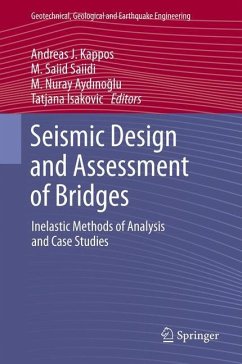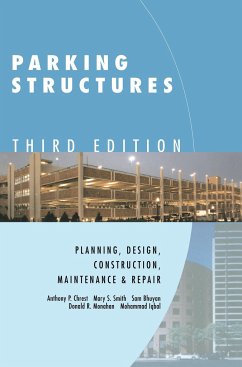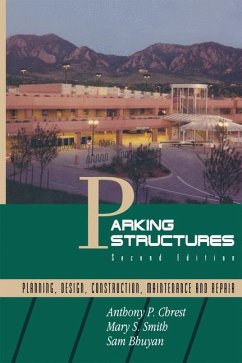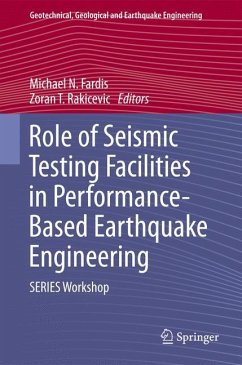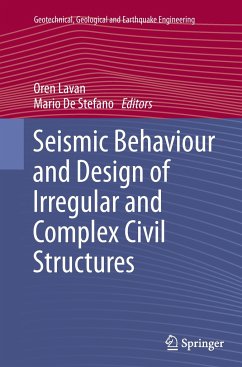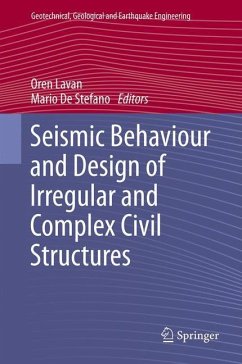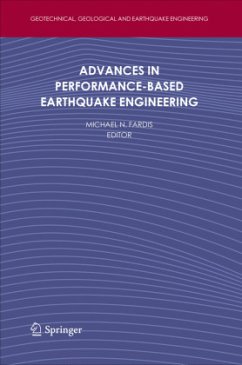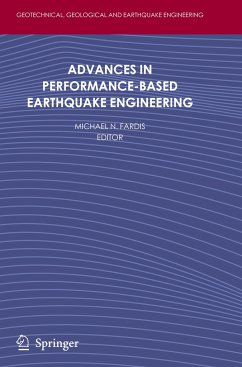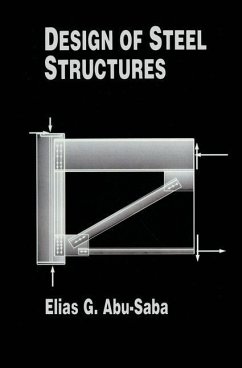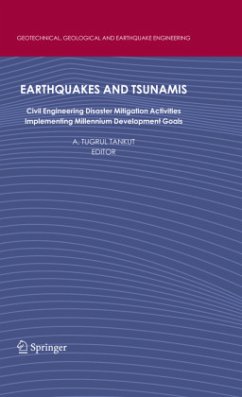Nicht lieferbar

Handbook of Seismic Design for Concrete and Steel Building Structures
Versandkostenfrei!
Erscheint vorauss. Dezember 2026
829,99 €
inkl. MwSt.
The major purpose of this book is to provide essential interpretations and comparative studies on the seismic related design code provisions for concrete and steel building structures in US, Canada and China, with the aids of well-schemed design examples. The unique features of this book are its practicality for reference, the clarity of the interpretations to the updated code and standards in terms of seismic design, and the comparative study of design practices in North America and China with the aids of design examples. The author would expect this book to help structural engineers better u...
The major purpose of this book is to provide essential interpretations and comparative studies on the seismic related design code provisions for concrete and steel building structures in US, Canada and China, with the aids of well-schemed design examples. The unique features of this book are its practicality for reference, the clarity of the interpretations to the updated code and standards in terms of seismic design, and the comparative study of design practices in North America and China with the aids of design examples.
The author would expect this book to help structural engineers better understand the seismic design practice in North American and China. There are very few technical reference works on market to link structural engineering practice (let alone seismic design) between North America and China. Most of structural engineers in China have very limited (or none) understanding and knowledge on the seismic design of steel and concrete building structures in North America, vice versa. The reason behind this phenomenon is not only the language barrier, but also the lack of understanding on the rationale and background of the design codes and engineering practices that have been established and developed in the respective countries. The seismic design methodologies and codes/standards requirements are very different between North America and China although they shared many common seismic engineering fundamentals. Those differences won't be easily interpreted via reading code clauses if one doesn't have sufficient engineering practice experiences in respective countries. The author of this proposed book has extensive engineering practice experience internationally, particularly in North America (Canada, US and China), and has profound knowledge and understanding in seismic design in both North America and China. Therefore, it is believed that this book could be an invaluable reference book to help engineers fill the knowledge gap, which could "bridge" structural engineers between North America and China in seismic design of concrete and steel structures.
In order to achieve above purpose, systematic and precise interpretations to the respective seismic design code provisions using "Engineer's language", and well-schemed design examples to mimic the design project in real world will be provided for readers better understanding the code applications in North America and China. A comparative study on the seismic design practice, following North American and Chinese codes and standards, will also be provided, which is to present the readers a high level "big-pictures" on the code provisions and engineering practices in respective countries.
In addition to that, some practical and useful "quick reference" design chart-flows, design tables, engineering model templates based on predominant structural design software will be provided in the appendices, which presentsanother unique feature of this book. This will help engineers better understand the code provisions and seismic design workflow following the design code and standards in US, Canada and China. For undergraduate and/or graduate students who are studying Civil and/or Structural Engineering, this book could be used as a technical reference book in conjunction with their textbooks, to help them get familiar with the real world problems and workflows of seismic design on concrete and steel structures following the design code and standards in US, Canada and China. This will be very helpful for those who want to pursue their professional future in structural engineering industry, particularly in international structural consulting engineering firms, which perform structural engineering consulting service in both North America and China.
The target readers and users of my proposed book are primarily the followings: 1. Structural design engineersa
The author would expect this book to help structural engineers better understand the seismic design practice in North American and China. There are very few technical reference works on market to link structural engineering practice (let alone seismic design) between North America and China. Most of structural engineers in China have very limited (or none) understanding and knowledge on the seismic design of steel and concrete building structures in North America, vice versa. The reason behind this phenomenon is not only the language barrier, but also the lack of understanding on the rationale and background of the design codes and engineering practices that have been established and developed in the respective countries. The seismic design methodologies and codes/standards requirements are very different between North America and China although they shared many common seismic engineering fundamentals. Those differences won't be easily interpreted via reading code clauses if one doesn't have sufficient engineering practice experiences in respective countries. The author of this proposed book has extensive engineering practice experience internationally, particularly in North America (Canada, US and China), and has profound knowledge and understanding in seismic design in both North America and China. Therefore, it is believed that this book could be an invaluable reference book to help engineers fill the knowledge gap, which could "bridge" structural engineers between North America and China in seismic design of concrete and steel structures.
In order to achieve above purpose, systematic and precise interpretations to the respective seismic design code provisions using "Engineer's language", and well-schemed design examples to mimic the design project in real world will be provided for readers better understanding the code applications in North America and China. A comparative study on the seismic design practice, following North American and Chinese codes and standards, will also be provided, which is to present the readers a high level "big-pictures" on the code provisions and engineering practices in respective countries.
In addition to that, some practical and useful "quick reference" design chart-flows, design tables, engineering model templates based on predominant structural design software will be provided in the appendices, which presentsanother unique feature of this book. This will help engineers better understand the code provisions and seismic design workflow following the design code and standards in US, Canada and China. For undergraduate and/or graduate students who are studying Civil and/or Structural Engineering, this book could be used as a technical reference book in conjunction with their textbooks, to help them get familiar with the real world problems and workflows of seismic design on concrete and steel structures following the design code and standards in US, Canada and China. This will be very helpful for those who want to pursue their professional future in structural engineering industry, particularly in international structural consulting engineering firms, which perform structural engineering consulting service in both North America and China.
The target readers and users of my proposed book are primarily the followings: 1. Structural design engineersa




